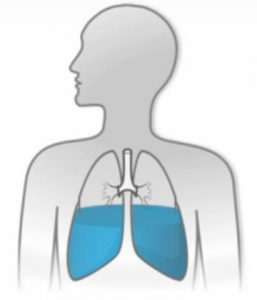
Breathing is an integral and natural part of living. We do it subconsciously and for the most part never even pay attention to the air entering and exiting our lungs.
As babies we knew instinctively how to breathe properly. However as we matured into adults and had to deal with the multitude of stresses and demands of our hectic lives, many of us unwittingly began to develop poor breathing habits.
As a result most of the time we are engaged in shallow chest breathing, otherwise known as ‘stress breathing‘ rather than the deeper belly breathing which is how our bodies need us to breathe.
Belly Breathing vs Chest Breathing:
Due to the shape of the lungs - wider at the bottom and tapered at the top, roughly like a pyramid - the best transfer of oxygen rich air into the bloodstream takes place at the lower end of the lungs because of the much larger surface area.
Chest breathing will not force the air deep enough into the lungs for this optimal transfer of oxygen to take place, and the body suffers as a result.
Deep belly breathing (or abdominal breathing, as it is also known) ensures that in each breathing cycle the very best use of the lungs’ capacity is being made, and this is vital for the overall health of the body. The slower rhythm of this type of breathing has a very beneficial effect on both physical and emotional responses to stress - and chronic stress has been shown to be a principal culprit in the development of hypertension.
How does deep breathing lower blood pressure?
Through increased supply of O2 to the brain the parasympathetic response system is stimulated to reduce heart rate, relax muscles and increase nitric oxide which in turn lowers blood pressure.
A Japanese study looked specifically at the connection between deep breathing and blood pressure. Here the deep breathing technique consisted of the first study group taking 6 deep breaths in a 30 second period, whilst a second study group just rested for 30 seconds. With a sample of over 20,000 participants, the results clearly indicated that the systolic BP readings of the first group dropped by an average of 10 mm/Hg - thereby indicating the positive effects of using deep breathing to lower blood pressure.
Getting back to “Baby” breathing!
Getting the hang of the deep breathing technique will take a bit of practice initially, but once mastered and with regular practice, it should soon become quite automatic.
- Find a comfortable and quiet place to either sit, or lie down. If sitting, remember to sit up straight to allow your lungs to inflate and deflate without any impedance.
- Place a small amount of weight on your stomach (over your belly button). Your hand or a book will suffice
- Breathe in slowly through your nose so that your hand (or book) rises as you fill your diaphragm with air.
- Hold your breath for approx. 4 seconds, then breathe out fully through your nose and feel your belly deflating.
- Repeat Step 3. and so on.
Ideally this deep breathing technique should be completed for about 10 - 20 minutes per session. Try and set aside time for deep breathing each day, so that it becomes an integral part of your daily routine.
